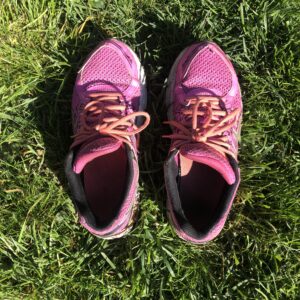Put Your Best Foot Forward…

Many of us have dusted off our running shoes in an attempt to keep fit during lockdown. If you’re a seasoned runner you may have a favourite brand or style of trainer and be well aware of when your running shoes need to be renewed.
For the less experienced or novice runner, buying new sports shoes and trainers can be a potential minefield. If you’re going to be pounding the pavements more regularly, it’s important that your feet are comfortable and well-supported.
How often should you change your trainers?
Most manufacturers would recommend 300-600km as a general rule for the shelf-life of your running shoes. However, there are a few variables to take into consideration such as your body weight, how often you’re running, how fast you run and the kind of terrain you’re running on. The higher any of these values, then your shoes will be wearing out more quickly.
What should you be looking for to determine signs of wear in your trainers?
Several areas of a running shoe can display signs that you need an update. Things to look for include signs of ripping or tearing in the fabric especially around the big toe and the heel tab, at the back of the shoe. Another obvious place to look for wear and tear would be the sole of the shoe. Loss of tread can leave you more susceptible to slipping, especially if you’re running in wet weather. If you have a very high arch or particularly flat feet, you’ll notice more wear on the inner or outer side of the running shoe respectively.
Do you feet or shins hurt after running?
Pain in the feet, achilles/calf or shins can often indicate a need to address your running shoes. Achilles tendon soreness during or after running can be related to a lack of shock absorbency in your trainers, especially in terms of the ‘offset’. The offset is the drop between heel and the forefoot – as a rule, the bigger the offset the better.
Shin pain can be a sign of over-training and may indicate that your trainers are not strong enough to control your feet, especially of you are hyper mobile or tend to overpronate.
If you’re experiencing persistent pain associated with running, it’s best to stop training until you’ve had professional advice.
